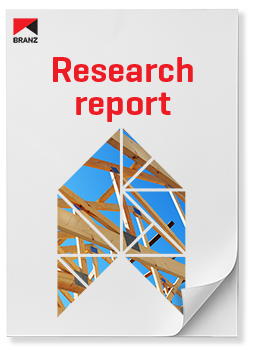
SR73 Seismic ratings for residential timber buildings (1997)
Product Description
Timber framed structures generally survive earthquakes well because of their intrinsically lighter mass. This survival occurs through load sharing between the large number of elements making up the structure, through having redundant elements and because the elements are able to deform during an earthquake.
The mechanics of load sharing and deformation mechanisms need to be determined if domestic and low-rise light timber-framed structures are to be engineered to allow for this enhanced performance.
Reverse cyclic laboratory experimental regimes are used to evaluate the performance of building elements. A computerised system is presented in this report, which enables an accurate computer model to be matched to the test element response. Once matched, the model may then be used to analyse the performance of the element under dynamic seismic loading and to generate seismic response spectra.
The computer model is shown to provide an excellent match to both reverse cyclic and shake-table laboratory experiments.
Product Information
| Publication date | 1997 |
|---|---|
| Author | BL Deam |
| System number | SR073 |